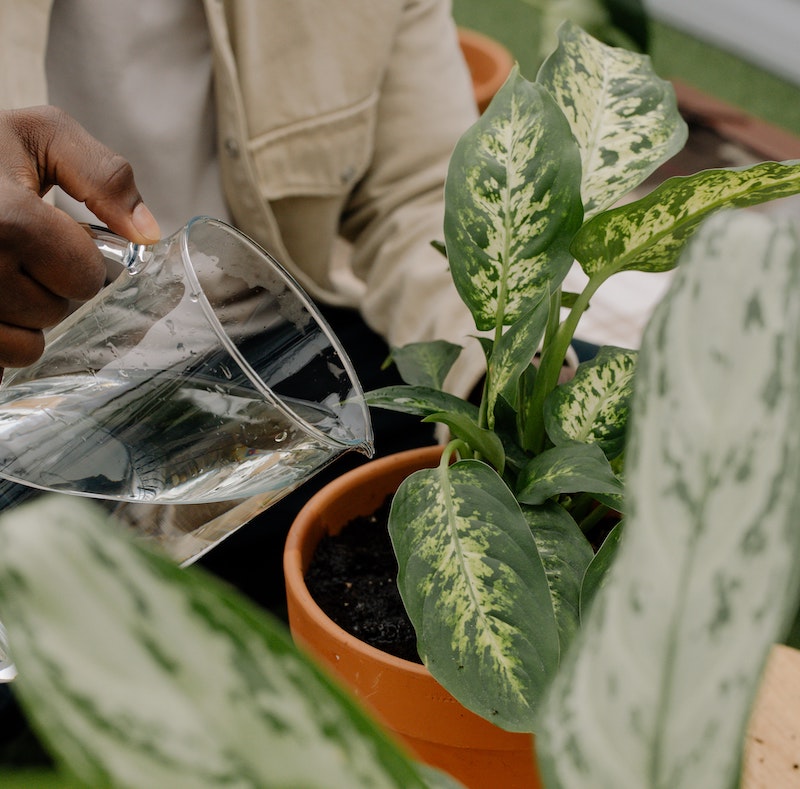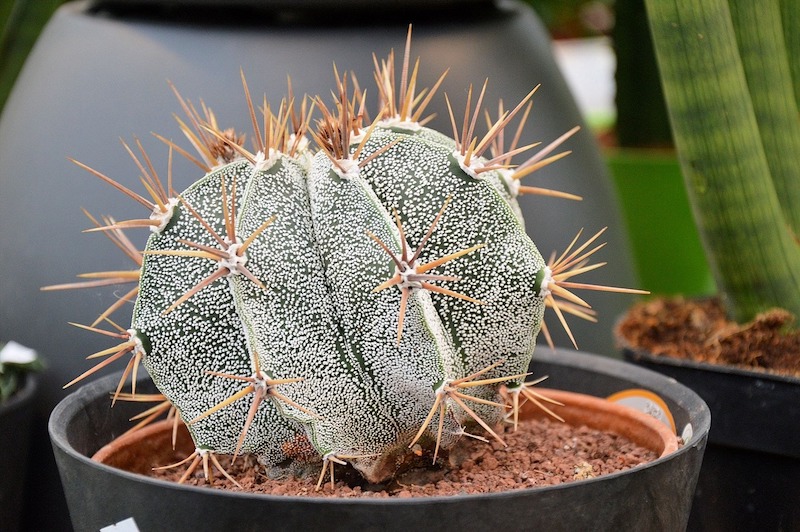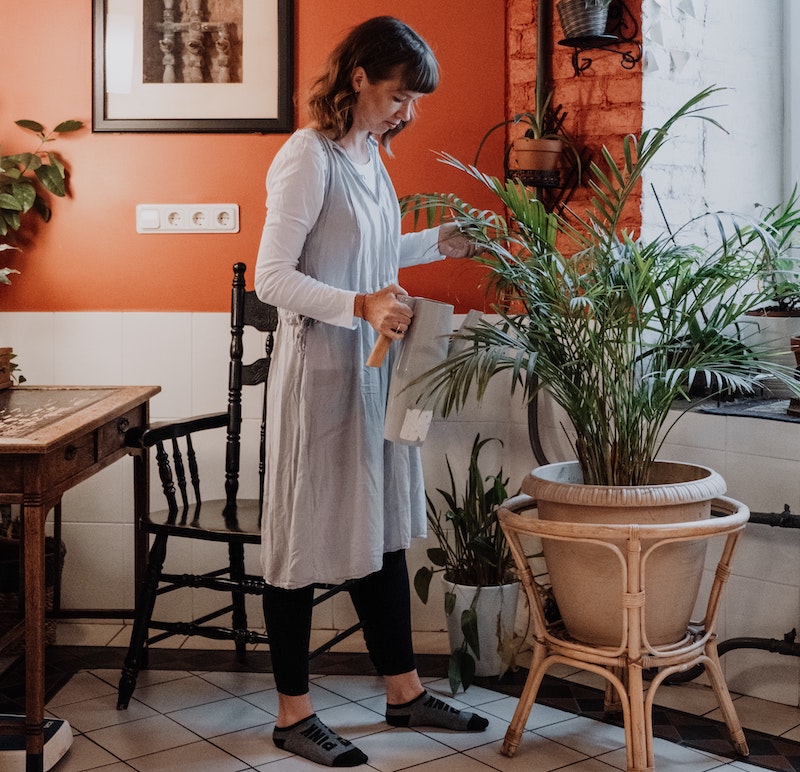Proper watering is one of the most important aspects of caring for houseplants successfully. Indoors, plants live in conditions different from what is natural to them. Things like the amount of sunlight, changing temperature, availability of humidity, and presence of air flow all affect how much water plants will need and how quickly they use it. Because of this, we as plant parents need to recognize what kind of houseplants we are growing, pay attention to how they respond to water, and take time to learn how to best water them.

How To Tell If A Houseplant Needs Water
First and foremost, it is important to note that the symptoms of overwatering often mimic those of underwatering. If plants are sitting in soggy, poorly draining soil, in pots without drainage holes, their roots can often become so damaged that they are no longer able to absorb water. This leads to the rest of the plant wilting because water is not being transported from the roots to stems, leaves, and flowers. It is easy to see a plant with limp, wilting leaves and assume that it is ready for water. Upon touching the soil, however, you may realize that that is not what the plant needs at all.

Touch is the best way to determine whether or not your plant needs water. Touching the soil to feel how far down it is dry, feeling the firmness of a plant’s leaves, and lifting the pot to feel how heavy it is are all ways to know when a plant needs water. For example, succulents, some of the easiest plants to overwater, are able to store water in their leaves and can go many weeks without being watered. If you stick your finger in the soil and find that about an inch down, the soil is wet, you do not need to water for another week or more. If the leaves of your succulent still feel quite firm and full of water, and the pot still has some weight to it (other than the weight of the plant and soil alone), you can also delay watering by a week.
While overwatering is of great concern in houseplants, it is still possible to underwater. When too much time passes between watering and the soil is not watered deeply or thoroughly enough, the plant may start to show symptoms of underwatering. These symptoms often include yellowing leaves (usually starting with older, lower leaves), dry crispy leaf edges, fading color, and wilting.
How To Water Houseplants
There are two main aspects of houseplant watering to keep in mind: frequency and amount of water. Often when we ask “how much water does this plant need?”, what we really mean is “how frequently does this plant need to be watered?” Watering frequency will greatly depend on what kind of plant you are working with. For example, cacti and succulents store water in their stems and leaves and only need to be watered once their soil is completely dry.
This can mean watering these plants as frequently as once a month in the summer and as seldom as once every few months in the winter. On the flipside, ferns, coming from humid, rainy environments, need consistently moist soil and may need water every few days throughout the year. Once we know what category a plant is in, we can take into account how much light they are in, the room temperature and humidity level, and air flow to determine how frequently to water.

How Much Water
After feeling a plant’s soil and determining that it is ready to be watered, we can think about how much water to add. Plants will almost always do best when their soil is watered deeply and thoroughly; that is, add water to your plant’s soil until water is coming out the bottom of the pot and the soil is completely damp, giving every root access to water. When only a small amount of water is added to soil, it can leave dry pockets, potentially damaging a plant’s roots and depriving them of adequate water.
You can also water through the bottom of the pot, sitting the pot in a tray of water for 30 minutes or so. This allows the soil to slowly absorb the water and saturate the roots while keeping the leaves and base of the stem dry and protected from rot.

As the growing conditions in our homes change throughout the year, watering routines and schedules may need to be continuously adjusted. In the summer, sunlight entering our windows is more intense, there are more hours of daylight, and indoor humidity is typically higher. As we enter fall and then winter, sunlight becomes less intense, daylight hours are fewer, and heaters tend to dry out the air. For this reason, it is a good idea to continue to use soil moisture and leaf firmness as guides for watering instead of following a set watering schedule. Many problems with watering can be avoided this way.
Best Water to Use To Water Houseplants
Tap water is typically fine to use on houseplants unless you have soft water, which contains potassium or sodium that can build up in the potting soil. Many houseplants will not tolerate the high salt levels and would prefer you use rainwater or filtered water. Hard water also contains a high amount of minerals including magnesium carbonates, bicarbonates and sulfites that can leave deposits in the soil and change the pH over time. You can flush the soil every few months with rainwater or distilled water to remove these salts.
Some plants are particularly sensitive to the chlorine in treated tap water and will develop brown tips. You can let the chlorine dissipate by letting the tap water sit out for 24 hours before adding it to your plants. Alternatively, you can use a water filter, like on a pitcher or fridge, to remove most of the harmful chemicals. Probably the best source to water your houseplants is aquarium water.
Dirty tank water is free of chlorine and contains many nutrients (e.g. potassium and nitrogen) that will benefit the health of your plant. If you keep fish, try saving the water for your plant babies when you do a water change. Lastly, make sure the temperature of whatever water you use is not too cold, which can stunt the growth of tropical plants such as ficuses and orchids.
Houseplant Watering Tips
- Know what kind of plant it is
- Feel the soil prior to watering
- Water deeply and thoroughly
- Overwatering can look like underwatering
- Watering in summer is different than winter
